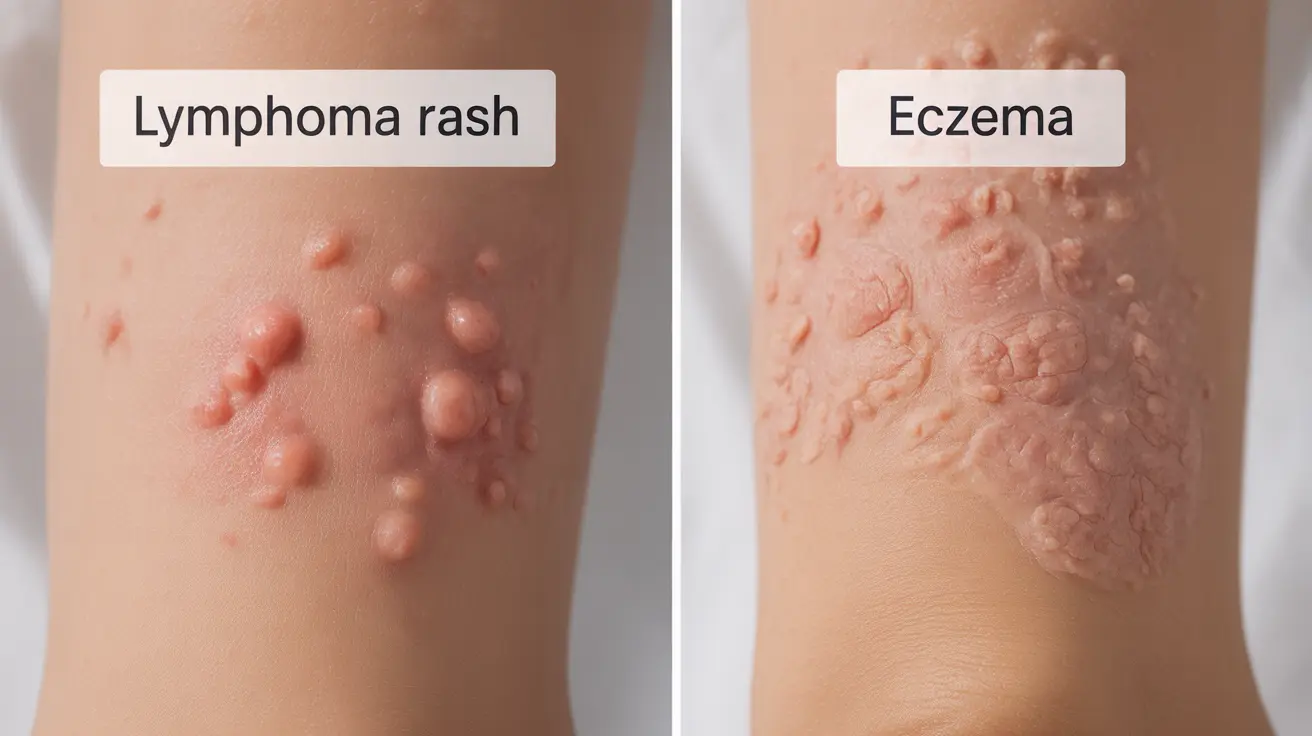Understanding the distinction between a lymphoma rash and eczema is crucial for proper diagnosis and treatment. While both conditions can cause red, itchy patches on the skin, they have different underlying causes and require vastly different treatment approaches. This guide will help you understand the key differences and recognize when to seek medical attention.
Understanding Lymphoma Rash and Eczema
Lymphoma rash occurs as a symptom of lymphoma, a cancer affecting the lymphatic system. In contrast, eczema is a chronic inflammatory skin condition that's non-cancerous. Being able to differentiate between these conditions is essential for appropriate medical care and peace of mind.
Visual Characteristics and Appearance
Lymphoma rash typically presents as raised, red or purple patches that may be itchy and scaly. These patches tend to be more persistent and may appear in unusual locations, such as the groin area or armpits. The patches often feel firm to the touch and don't respond to typical skin treatments.
Eczema, however, usually appears as dry, red, and intensely itchy patches. The affected skin may become thickened over time due to scratching. Common locations include the inner elbows, behind the knees, and on the face, though it can occur anywhere on the body.
Associated Symptoms
Lymphoma-Related Symptoms
When a rash is related to lymphoma, it often accompanies other systemic symptoms including:
- Unexplained weight loss
- Night sweats
- Persistent fever
- Enlarged lymph nodes
- Fatigue
- Loss of appetite
Eczema-Related Symptoms
Eczema symptoms typically include:
- Intense itching
- Dry, sensitive skin
- Inflammation
- Rough, scaly patches
- Oozing or crusting
- Sleep disturbance due to itching
Diagnostic Process
Healthcare providers use several methods to distinguish between lymphoma rash and eczema. These may include:
- Physical examination
- Medical history review
- Skin biopsy
- Blood tests
- Imaging studies (if lymphoma is suspected)
Treatment Approaches
Treatment varies significantly depending on the diagnosis. Eczema typically responds to:
- Topical corticosteroids
- Moisturizers
- Trigger avoidance
- Antihistamines
If lymphoma is diagnosed, treatment may involve:
- Chemotherapy
- Radiation therapy
- Targeted therapy
- Immunotherapy
Frequently Asked Questions
What are the key differences between a lymphoma rash and eczema rash? A lymphoma rash typically presents as firm, persistent patches that don't respond to traditional skin treatments, while eczema appears as dry, itchy patches that often improve with topical treatments. Lymphoma rash is usually accompanied by systemic symptoms like weight loss and fever, which are not typical of eczema.
How can doctors tell if a red, itchy skin patch is lymphoma or eczema? Doctors use a combination of physical examination, patient history, and diagnostic tests. They look for associated symptoms, evaluate the appearance and behavior of the rash, and may perform a skin biopsy for definitive diagnosis.
What symptoms with a rash suggest it might be lymphoma rather than eczema? Key warning signs include unexplained weight loss, night sweats, persistent fever, enlarged lymph nodes, and a rash that doesn't respond to conventional treatments. The presence of these symptoms alongside a rash warrants immediate medical attention.
When should I see a doctor about a rash that looks like eczema but doesn't improve? Seek medical attention if your rash persists despite over-the-counter treatments, is accompanied by systemic symptoms, or if there are any changes in size, color, or texture of the affected areas.
Why is a skin biopsy necessary to diagnose lymphoma rash versus eczema? A skin biopsy is essential because it allows doctors to examine the cellular structure of the affected skin tissue under a microscope, definitively distinguishing between cancerous lymphoma cells and the inflammatory changes characteristic of eczema.




